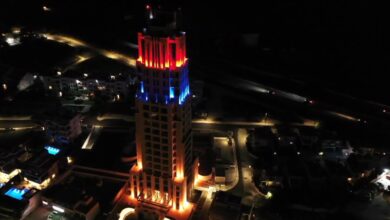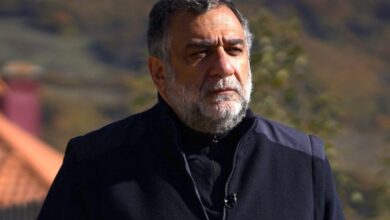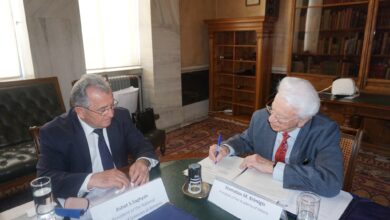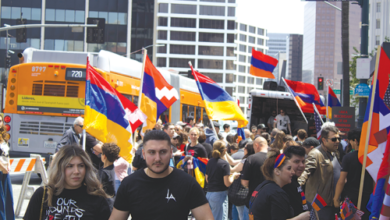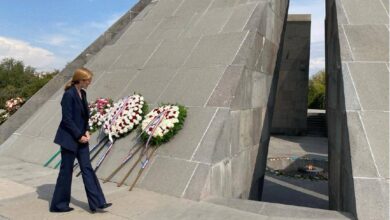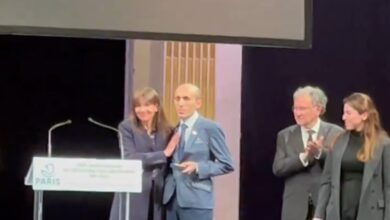Armenian Bar Association stands strong for Kessab’s recovery
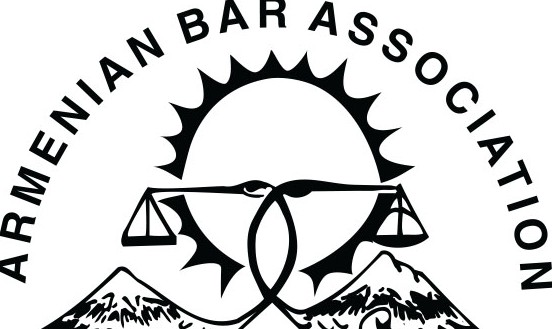
On the evening of August 27, 2014, a large audience of concerned community members gathered in Glendale, California to attend a town hall meeting which focused on the plight of the Armenian community in Kessab, Syria. Co-sponsored by the Armenian Bar Association, the event featured as keynote speakers Garo Ghazarian, Chairman Ex-Officio of the Association and Stepan Apelian, a resident, business owner, and community leader of Kessab, Asbarez reports.
Kessab is a town located in the northwest corner of Syria, nestled in the mountains which rise above the Mediterranean Sea. The town’s inhabitants are almost entirely made up of Armenians. Kessab is one of the few Armenian villages that survived the Genocide and was able to continue as a vibrant community. In March, 2014, the historic town was invaded by heavily-armed militia who entered Syria from the Republic of Turkey. Engrained with the collective memory of the Genocide, most of the residents of Kessab fled to the neighboring city of Latakia, Syria. The insurgents inflicted violence upon the community and, in the process, looted and destroyed Armenian churches, schools, homes and businesses.
Ghazarian, who co-chairs the Armenian Genocide Centennial Committee-Western United States, was the first speaker. He explained to the audience that hearing of the violence that was being wrought upon his ancestral home of Kessab, he decided to travel as close as possible to Kessab so as to get a first-hand assessment of the situation and determine the immediate needs of the refugees. In an interview conducted by the Los Angeles Times Beirut Bureau Chief, Patrick McDonnell, on April 9, 2014, Ghazarian explained his reasoning as follows: “The preservation of this village and its people is of utmost importance to the Armenian people.” Through the efforts of Ghazarian, refugees from Kessab who had reached Beirut were interviewed by McDonnell. He wrote of their harrowing stories and the Los Angeles Times brought their tragic situation to world attention by publishing the Kessab community’s plight in the first section of the newspaper.
Ghazarian further explained to the town hall participants that he could not stay home in Los Angeles, while the residents of his family’s hometown were in peril. In an interview following the lecture, Ghazarian, drawing from his eye-witness observations, added: “I witnessed the emotional and individualized recountings of the Kessabtsis’ exodus from their sacred ground. We must insist that the international community as well as Turkey’s own ally, the United States, stop paying lip service to Armenians, and to start an investigation of Turkey at all levels. We must demand more than mere utterances of ‘concern.’ We must demand action to not only halt Turkey’s continued disregard of the rights and liberties of Armenians, but also the undertaking of sustainable efforts to remedy what will no doubt become an irreversible reality on the ground for our fellow Armenians of Kessab.”
With the shock and awe of dozens of pictures, Apelian was able to convey to the audience a sense of the terror and destruction which the Armenian community faced by the invading forces. He explained that several churches, schools and businesses were gutted of everything that was contained within them. Sparing nothing in their ruinous wake, the aggressors went as far as to desecrate the crosses of our Armenian churches. Apelian emphasized that Kessab poses an opportunity and challenge to the world-wide Armenian nation to galvanize itself in aid of its fellow Armenians and to help rebuild our collective past and future.


